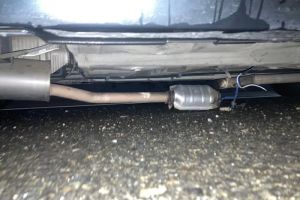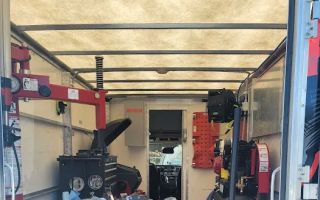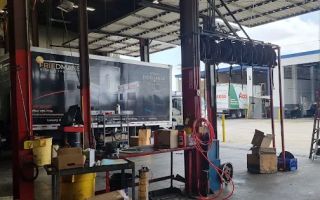- Understanding-Roadside-Assistance-for-Electric-Vehicles
- Key-Challenges-in-EV-Roadside-Assistance
- Steps-to-Get-Effective-EV-Roadside-Assistance
- Real-Life-Stories-Showing-EV-Roadside-Assistance-in-Action
- How-to-Prepare-to-Minimize-EV-Roadside-Issues
Understanding Roadside Assistance for Electric Vehicles
As electric vehicles (EVs) become increasingly popular, the need for specialized roadside assistance tailored to their unique systems grows in importance. Unlike traditional gasoline cars, EVs operate on high-voltage batteries and electric drivetrains, which require technicians to have specialized knowledge and equipment.
Roadside assistance for electric vehicles focuses on addressing specific issues such as battery depletion, charging system faults, and software glitches, along with common problems like flat tires or lockouts. Understanding these distinct needs helps EV owners make informed decisions when seeking help during emergencies.
Choosing the right service provider who understands the complexities of EV technology is crucial. For instance, companies like Rescue & Towing offer tailored services that cater specifically to electric vehicles, ensuring safe and efficient assistance without causing damage to sensitive electrical components.

California Roadside Service
1426 S Allec St, Anaheim, CA 92805, USA
Key Challenges in EV Roadside Assistance
Handling roadside emergencies for electric vehicles involves several unique challenges that differ from those encountered with traditional cars.

Dee's Auto Care Specialists - Onalaska
845 Oak Ave S, Onalaska, WI 54650, USA
1. Battery-Related Issues
Running out of battery charge is one of the most common reasons EV drivers require roadside help. Unlike gasoline vehicles, which can be refueled quickly, EVs need either a portable charger, a nearby charging station, or towing to the nearest charging facility.
2. High Voltage Safety Concerns
Electric vehicles operate with high-voltage systems that can pose risks if not handled properly. Roadside technicians need special training and equipment to safely interact with these components without risking electric shock or damage.
3. Limited Charging Infrastructure
Despite rapid growth, charging infrastructure is still not as widespread as traditional fuel stations, especially in rural or remote areas. This limitation sometimes means EV owners require towing services more often than gas vehicle drivers.
4. Software and Communication Systems
Many EVs rely heavily on integrated software and remote diagnostics. When these systems fail, roadside assistance might involve resetting the software or providing guidance via phone support, which adds complexity to the service.
Steps to Get Effective EV Roadside Assistance
When faced with an emergency involving your electric vehicle, following a clear plan can reduce stress and get you back on the road faster.
1. Stay Safe and Assess Your Situation
Pull over to a safe spot if possible and evaluate the problem. Are you out of battery power, or is there a mechanical issue? Understanding the situation will help you communicate clearly with assistance providers.
2. Contact a Specialized Roadside Assistance Service
Call a service experienced with electric vehicles. Companies such as Rescue & Towing offer specialized EV roadside assistance, including mobile charging units and trained technicians.
3. Provide Clear Information
When requesting help, give detailed information about your EV model, location, and the nature of the problem. This ensures the technician arrives equipped with the right tools and resources.
4. Explore Mobile Charging Options
Some services can dispatch mobile chargers to your location to provide enough power for you to reach a charging station. This solution is often faster and less costly than towing.
5. Prepare for Towing if Needed
If charging on-site is not possible, the vehicle will need to be towed to the nearest charging station or dealership. Make sure the towing company understands EV requirements to avoid damage during transport.
Real-Life Stories Showing EV Roadside Assistance in Action
Take the example of Emily, who found herself stranded on a highway after her EV battery unexpectedly depleted during a long trip. With no charging station nearby, she contacted Rescue & Towing. Within 30 minutes, a technician arrived with a mobile charging unit, giving her enough charge to safely reach the next station. This quick response turned a potentially stressful situation into a smooth recovery.
In another case, David experienced a software glitch that disabled his electric vehicle’s starting system. After calling specialized roadside assistance, technicians remotely diagnosed the issue and guided him through a reset procedure, saving him from towing and long wait times.
These cases highlight how modern roadside assistance for EVs goes beyond simple towing—it provides tailored solutions that address the specific challenges of electric vehicles.
How to Prepare to Minimize EV Roadside Issues
Prevention is key to avoiding inconvenient and potentially costly roadside emergencies with your electric vehicle. Here are practical tips:
1. Monitor Battery Levels Closely
Plan your trips with charging stations in mind, and avoid letting your battery drop below critical levels. Many EV apps provide real-time information about nearby chargers and estimated remaining range.
2. Keep Emergency Supplies and Tools Ready
Carry portable EV chargers, tire repair kits, and safety gear in your vehicle. Having these on hand can make minor issues manageable without immediate professional help.
3. Regular Maintenance and Software Updates
Keep your EV’s software up to date and schedule regular inspections to ensure all systems are functioning correctly. This reduces the chance of unexpected failures on the road.
4. Know Your Assistance Provider’s Coverage
Before hitting the road, verify that your roadside assistance service covers electric vehicles and offers features like mobile charging. Rescue & Towing is a reliable choice for EV drivers seeking comprehensive support.
By staying informed and prepared, you can confidently enjoy the benefits of electric vehicle ownership with fewer worries about roadside emergencies.






























